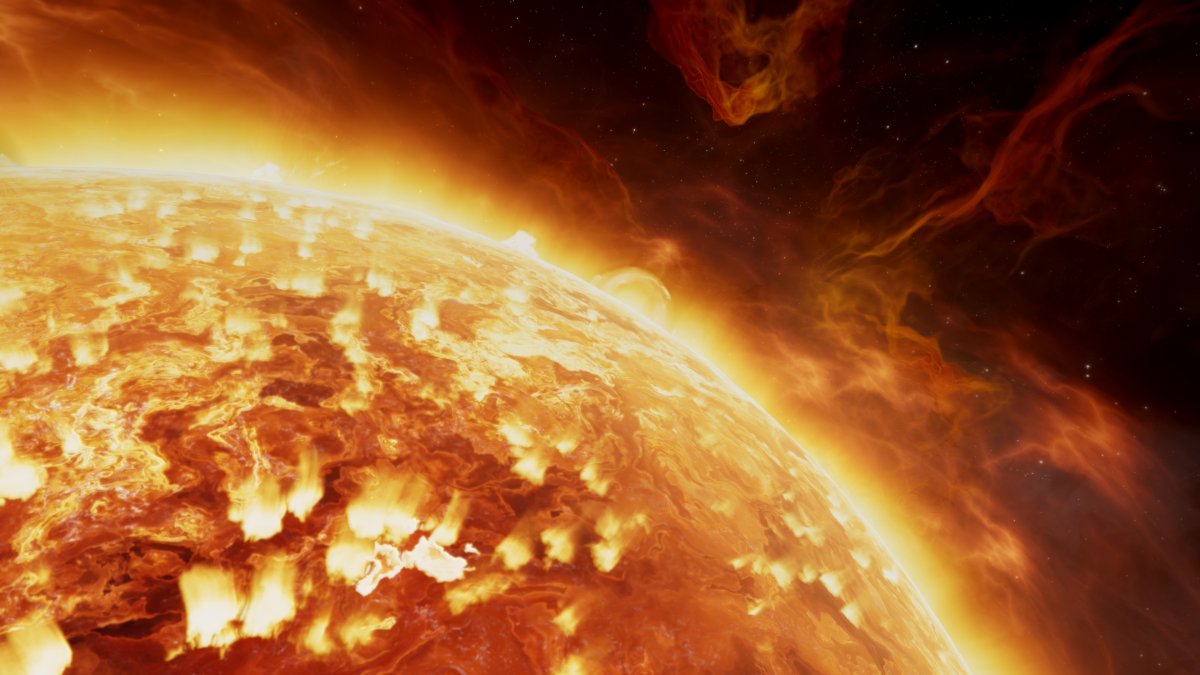Scientists have warned that a "cannibal" solar storm cloud could be hurtling toward Earth after a series of explosions on the sun's surface. The impact is expected to bring about navigation and GPS faults as well as potential radio blackouts, power cuts and auroras.
The past few days have been marked by a burst of activity on the sun's surface, with a series of moderate-intensity M-class solar flares.
Solar flares are large bursts of electromagnetic radiation that occur when energy is released from entangled magnetic field lines on the sun's surface. These can be classified according to their strength.
"The weakest are the A-class flares, followed in intensity by the B class, C class, M class—these are moderate—and the X class," Gonzalo José Carracedo Carballal, an astrophysics researcher at Madrid's Instituto Nacional de Técnica, previously told Newsweek.

M- and X-class solar flares are often accompanied by large ejections of solar plasma, known as coronal mass ejections or CMEs. These are essentially clouds of electrified, magnetic gas that hurtle into space at speeds of up to 1,250 miles per second.
When directed toward Earth, they can reach our planet in a matter of hours, although slower ejections can take several days to arrive.
At least three of these solar storm clouds are due to strike the Earth on Tuesday, according to projections by the National Oceanic and Atmospheric Administration (NOAA), potentially sparking moderate geomagnetic storms across the globe. However, because they have been fired out in such quick succession, experts have warned that there is a small chance that these CMEs will pile up to form what is known as a "cannibal coronal mass ejection."
Cannibal CMEs occur when one fast-moving CME engulfs a slower-moving CME in front of it, according to NASA. Real-time solar activity tracker SpaceWeatherLive.com says this pileup could result in even stronger geomagnetic storms Tuesday afternoon.
But what does this actually mean for us?
The NOAA says that "solar disturbances have long been known to disrupt communications, wreak havoc with geomagnetic systems and to pose dangers for satellite operations."
However, thanks to the Earth's magnetosphere, ionosphere and atmosphere, our planet is largely protected from the effects of these projections. So you are most likely to experience these storms as auroras in higher latitudes and potential power cuts.
"Good luck aurora chasers," sun scientists at website the Sun Today said in a Facebook post. "Clear skies."
Do you have a tip on a science story that Newsweek should be covering? Do you have a question about solar flares? Let us know via science@newsweek.com.
Uncommon Knowledge
Newsweek is committed to challenging conventional wisdom and finding connections in the search for common ground.
Newsweek is committed to challenging conventional wisdom and finding connections in the search for common ground.
About the writer
Pandora Dewan is a Senior Science Reporter at Newsweek based in London, UK. Her focus is reporting on science, health ... Read more
To read how Newsweek uses AI as a newsroom tool, Click here.






